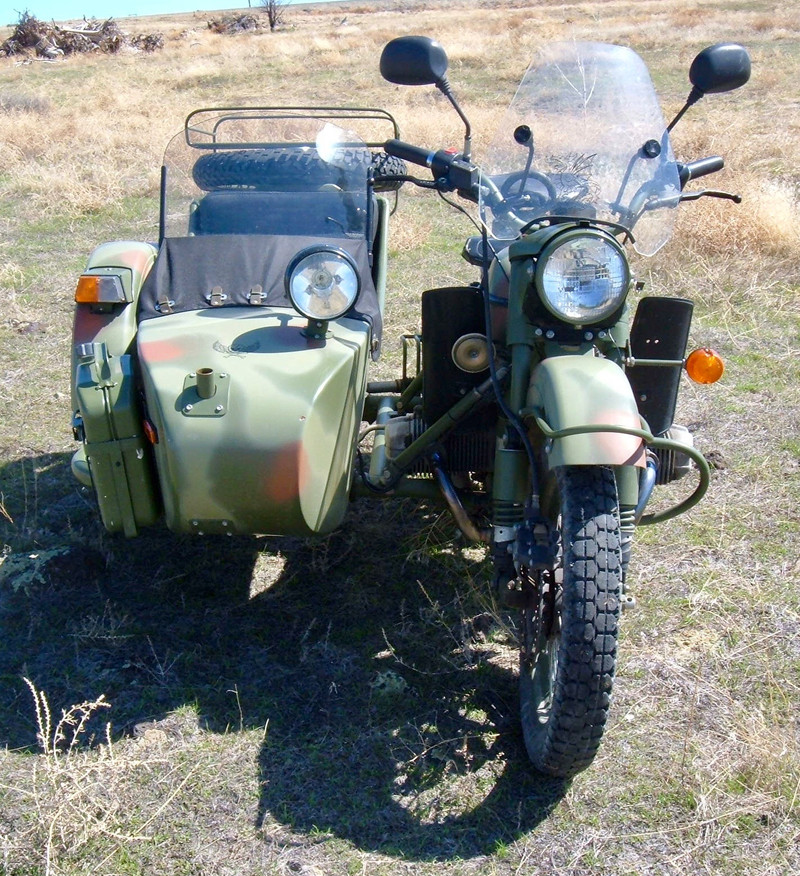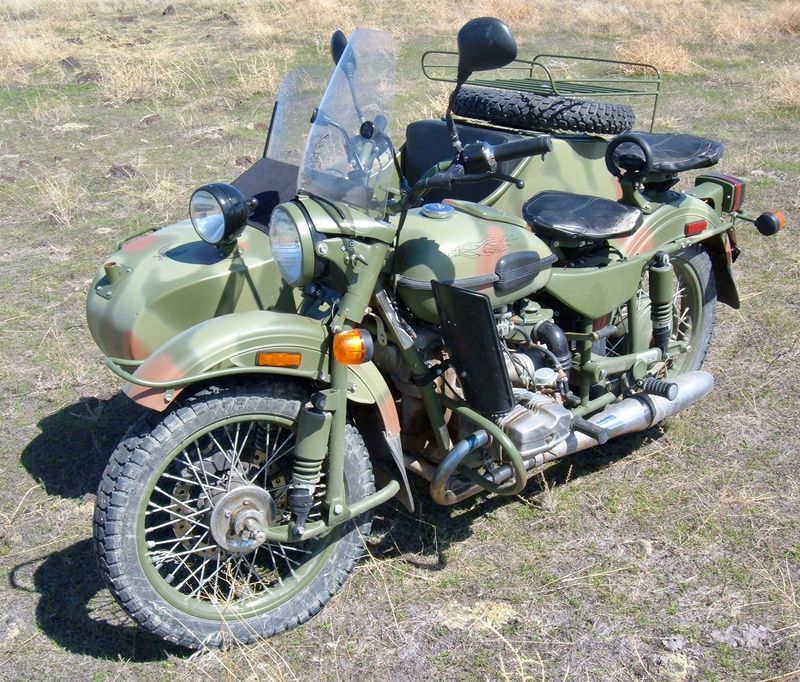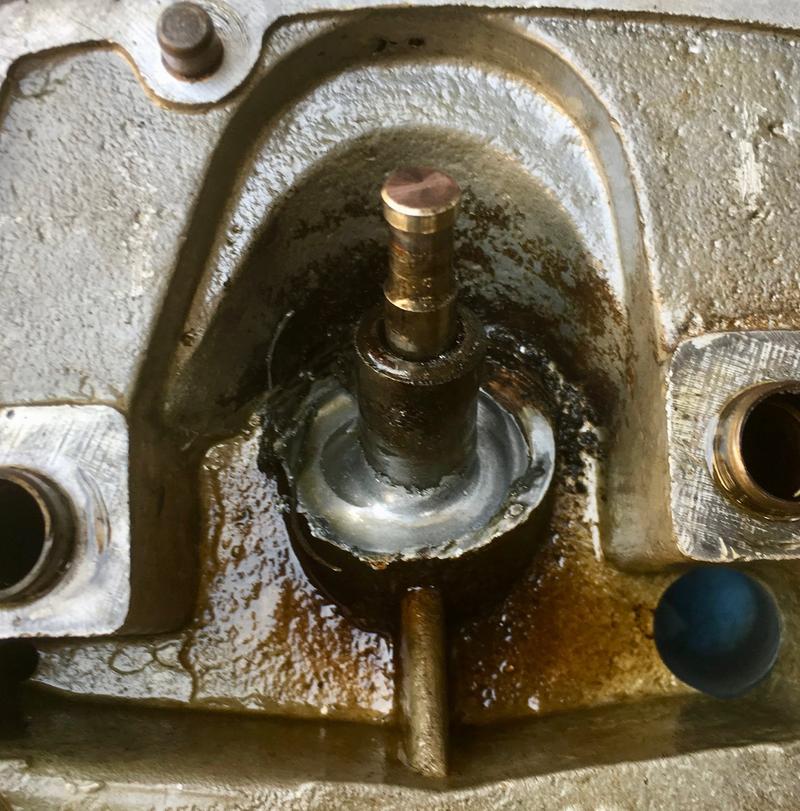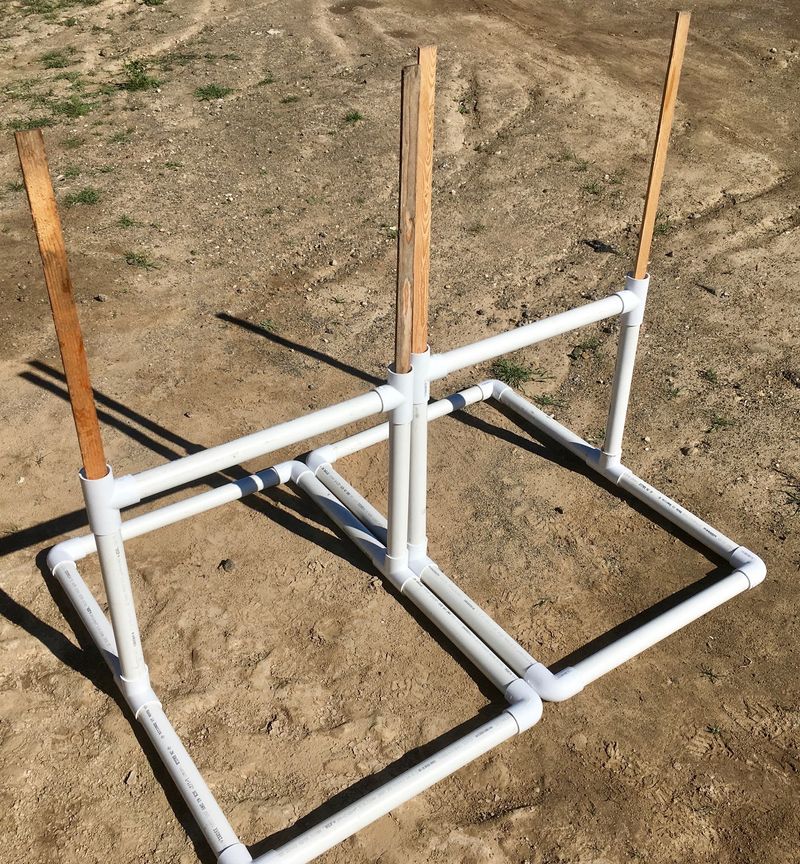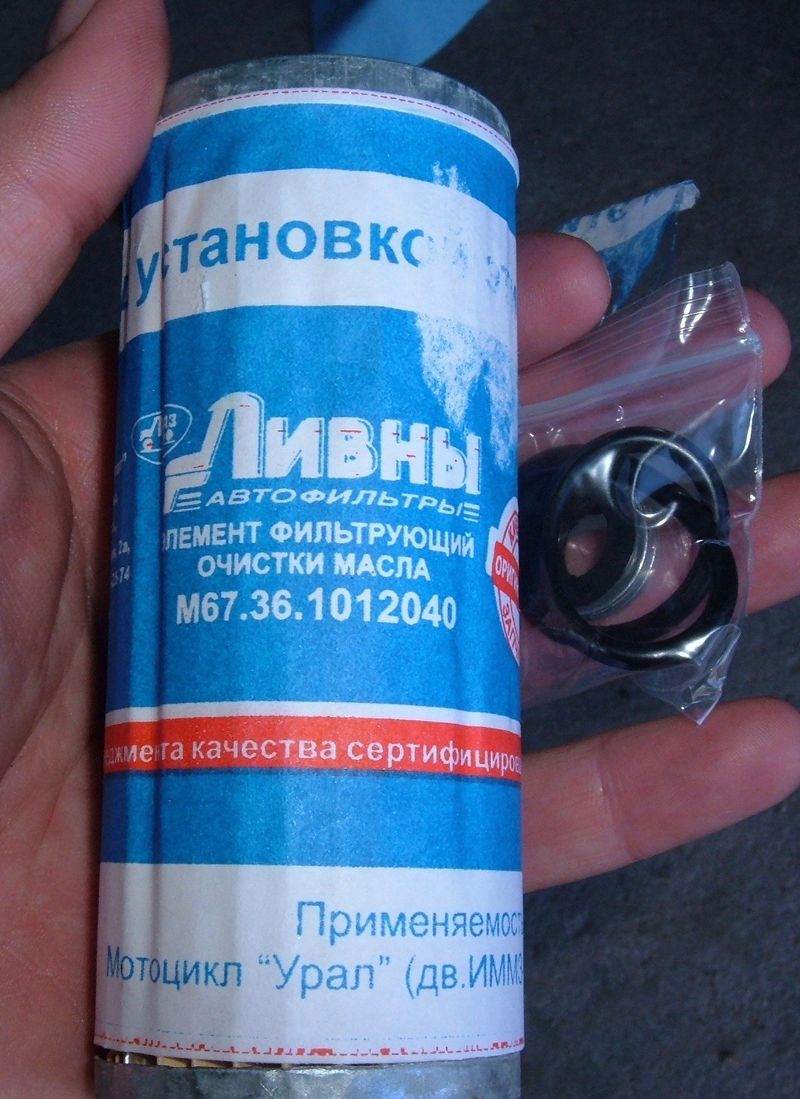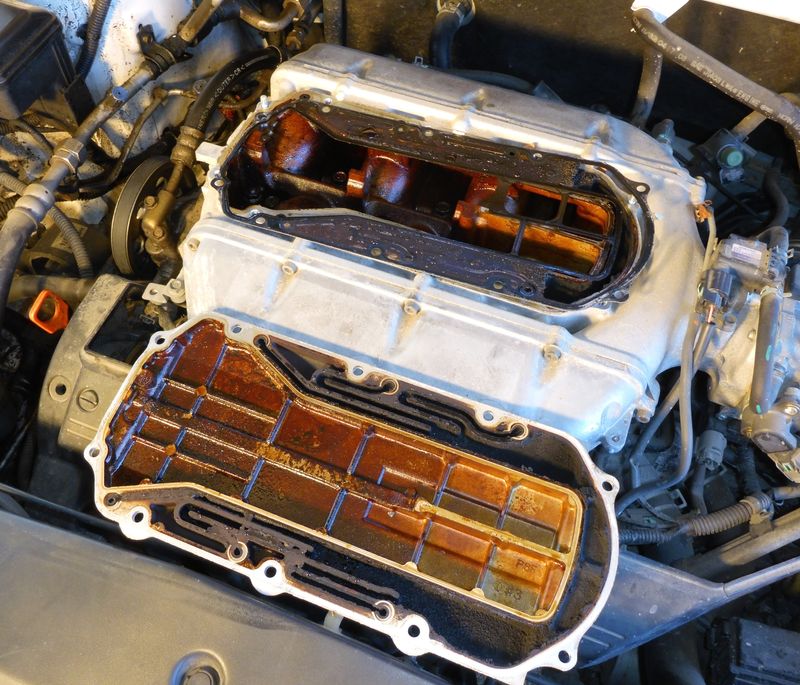In October 2016, I bought a Ural. Specifically, a 2005 Ural Gear-Up. This is one of the 2WD models, and it comes with pretty much all the various gizmos - shovel, spotlight, fluid container, machine gun mount, spare tire, rear rack… just about everything you could need!

I rode it all the way through the winter this year (which was a particularly rough winter for the area), put a few thousand kilometers on the clock, have done some work on it and added a sidecar windshield, and at this point I think I have a decent feel for this particularly obscure and unique form of transportation that is the source of endless questions from, well, everyone.
Why do I own a Ural? Partly, I’ve wanted one for years. However, it’s mostly because a Ural is a motorcycle that can carry my daughter in the sidecar while my wife & I ride (we both ride). So far, my daughter loves it, and we’re planning on quite a bit of riding this year.
But… Ural? If you’re curious, read on!
What’s a Ural?
A Ural is a Russian built motorcycle that’s designed around being a sidecar rig. It’s based (originally) on a late 1930s German BMW motorcycle (it’s still confused with those on a regular basis), and depending on who you ask, the Russians reverse engineered some BMWs, the Russians bought a German set of tooling, or the Russians helped themselves to some German tooling. Any or all of the above could be true - pick your favorite story.

But, regardless of the origins, the design has been (very) slowly iterated over the years, and consists of a horizontally opposed two cylinder engine (750cc), a funky front suspension designed for sidecar use, a shaft drive, a sidecar, and if you have a 2WD model (which I do), a driveshaft extending between the final drive and the sidecar wheel. With the proper lever toggled, both wheels are locked together, and while the motorcycle no longer really turns, you can get through an awful lot of stuff! Or, at least, get yourself really, really stuck somewhere you probably shouldn’t be. Hey, the bike comes with a little shovel for a reason!

Handling: This Ain’t Your Daddy’s Motorcycle
A lot of people think of a sidecar rig as “a motorcycle with a sidecar attached” - which, technically, is true. But that’s terribly misleading when it comes to questions of handling. A sidecar rig doesn’t handle anything like a motorcycle. It doesn’t handle like a four wheeler. It certainly doesn’t handle like a car. It handles like an asymmetrical pig of a vehicle that views being in a hurry as a cardinal sin worthy of the death penalty. Right now.
So, you know, a sidecar rig!

Despite sharing controls with a motorcycle, a sidecar rig does not handle like a motorcycle. Most obviously, it doesn’t lean. It corners flat, at least as long as all three wheels are on the ground. This means that countersteering (which, yes, is how you steer all tandem two wheel vehicles) is not a thing. You muscle the front wheel around in the direction you wish to turn, and it will begin the process of turning.
Because there’s a sidecar hanging off the right side, turning right and turning left are totally different. When you’re turning right, the forces are trying to lift the sidecar - and will happily do so, if you come in to a corner too fast. This means that your right hand cornering speed is, oddly enough, limited by your sidecar weight. Empty? The sidecar comes up easily. Loaded with a quarter ton of sandbags, lumber, and assorted other things? Well, you can corner to the right radically faster, even if you shouldn’t.
Turning left is the opposite. It forces the sidecar into the ground. This seems like it would allow for unlimited cornering speed, and you can certainly take left hand corners a lot faster than right hand corners - right up until the rear pusher wheel (on the motorcycle side) lifts off the ground, the rig pivots along an axis from the front wheel to the sidecar wheel, and rolls over. So there’s a limit there, as well. It’s just higher, and a good bit less forgiving.
If you turn right too hard (or, at speed, make an aggressive swerve right), the sidecar will come off the ground. This is known as “flying the chair,” and ranges from somewhere between “a lot of fun” and “really terrifying,” depending mostly on if it was intentional or not, and how high the sidecar currently is from the ground. Front brake in a right hand corner will help bring the sidecar down, as will increasing the turn radius, but that second option often involves the opposing lane of traffic, which is no good.
For most motorcycles, most riders, and most conditions, if you enter a corner a bit too fast, the motorcycle can handle it - don’t panic, lean harder, and as long as you’re not dragging hard parts particularly loudly, the motorcycle will make the corner.
A sidecar rig is not nearly as forgiving. Come into a corner too fast, and it tries to kill you. There are a few things you can do to help keep things in shape (front brake often being helpful - which is not a useful response on a motorcycle, most of the time), but it’s quite easy to enter a corner fast enough that your options are to flip or enter the other lane of traffic - if there is such a thing. It is not a fast cornering vehicle.
Sidecar rigs are also often prone to a bit of a headshake at certain speeds (the front wheel oscillating back and forth). The solution to this is a steering damper. That triangular knob is the steering damper - it’s a simple friction device. Turn the knob right to tighten it, left to loosen it. It works, but you certainly can tell it’s there when turning the bars. Tightening it is also useful on rough terrain.

Once you get over the cornering behavior, there’s the general straight line behavior. It doesn’t accelerate in a straight line! If you try to accelerate without compensating, the whole rig heads to the right. Conversely, if you’re decelerating without compensating, the whole rig heads left. The sidecar over there makes for a great demonstration of inertia - the sidecar lags the rest of the setup.
That is, unless you have 2WD engaged. Then, because the whole assembly is rigged assuming one wheel drive, and the rear wheels both turn together, the reactions are exactly opposite. And if your tires aren’t the exact same rolling diameter (because, say, the pusher tire is worn and the sidecar tire is not), you get some extra forces involved and, in my case, a rig that tries to turn left in 2WD. I really need to replace that tire…
Finally, a Ural is not fast. By motorcycle standards, it’s quite glacial. The engine doesn’t make that much power (40hp is probably optimistic), wide open throttle is a very frequent state of affairs for climbing hills, and if you ask for too much speed, too often, you’ll break things. This is not a highway bike. It’s a back road bike, and if I don’t have any traffic behind me I normally cruise around 45-50mph (even on higher speed roads). There’s just no reason to push it unless you like replacing expensive parts.
All that said: As long as you understand what you’re riding and keep your speed down (the yellow sign suggested cornering speed should be viewed as an upper limit, not something to multiply by 2 or 3), the handling isn’t that hostile. You just cannot, cannot be in a hurry. Not that you’ll accomplish getting anywhere in a hurry with this vehicle anyway. Because, there’s this thing called…
The Ural Delay Factor
The UDF. Ural Delay Factor. No, that doesn’t refer to time spent working on it, or time spent (say, hypothetically) fiddling with the clutch actuator pivot on the side of the road because a cotter pin was missing and the pivot backed out.
It refers to the fact that you can’t take this bike anywhere without people asking you questions. It is, quite literally, the weirdest vehicle that most people you run across will have ever seen on a road or in a parking lot. There was a time, many years ago, when sidecar rigs were common (my great grandmother and her husband went on their honeymoon in one, shortly after WWII). They aren’t anymore. They are incredibly rare. And a Ural is even more confusing to people who know something about motorcycles, because it looks, for all the world, like something from the 1950s or 1960s.

You get thumbs up, grins, and people rolling their windows down at stoplights. You get people doing literal double takes on the road. And that’s before you even get to a parking lot. I’d say that 75% of the times I stop somewhere, someone makes some comment, or asks me about it. Not 75% of trips - 75% of the time I stop and get off the bike. You cannot make good time on one of these.
A small, small percent of people will know what it is, and express amazement that you’re riding one. Everyone else has no idea what it is, usually thinks it’s quite old (1960s is the most common guess), and is just amazed by the whole concept.
Personally, I love it. I don’t take the Ural anywhere in a hurry. And the attention is a nice contrast to the solitude of my office.
I’ve owned an “art car” before - the Redneck Ricer.


The Ural gets a ton more attention. No comparison. Not even a bit.
Winter Riding: Snow and Ice
One of the best things about a sidecar rig: Snow and ice don’t stop you! This is a year round motorcycle for most areas, with a few minor limitations.
I rode all winter long this last winter. It was a particularly harsh and snowy winter for the area, but I only got stuck a few times (all in my driveway). The rest of the winter, zero problems.

With properly adjusted carburetors (and intake boots that are sealed up and don’t leak), a Ural should start without problems well below zero. I don’t know what the limit is, because I didn’t even start to have problems at 0F this winter. Pull the enrichener levers, kick it through a few turns, tap the starter, and it lights right up. The engine is cold and cranky until it warms up, but it’ll start and run just fine when you need some serious winter riding gear. It’s a lot better about cold weather starting than the Buells are.
I have a fairly long (1/8th mile) uphill driveway to get to the road. A lot of the winter, I needed 2WD to get up the driveway - which, fortunately, I have. There’s a bit of a trick to getting the 2WD engaged and disengaged (swerve back and forth while fiddling with the lever), and things are easier if you engage it regularly.
Once out on the roads, I really only had to use 2WD if there was a lot of snow on the road. 1WD works in a lot of conditions that are really questionable, but because the whole setup is stable on three wheels, spinning up the rear wheel (or locking the front under braking) doesn’t dump you over like it would on a normal motorcycle. Going down the road and hitting a slick patch of snow or ice simply isn’t a problem unless you’re trying to make it one. Be gentle on the throttle and you’ll keep on going straight across the icy patch.
Braking on ice and snow is also a lot safer than on a motorcycle - you can lock up the wheels and stay upright. Coming down our driveway this winter, braking action was somewhere between “poor” and “nil” on the slopes. Without anything nearly so fancy as antilocks, intermittently locking up the front wheel (and rear wheels) seems to be the best way to maintain speed going downhill on a slippery slope. Although most of the times I didn’t bother, went barreling down the hill, and found some traction on a flat spot before our house. Or didn’t find traction, and went sailing past. Oh well.
Oh, and with 2WD? Snownuts are awesome. You can rotate the whole rig around the front wheel by spinning the rears up. It’s even more fun than it looks, though be careful which way you rotate (spinning to the left is safer than spinning to the right if you suddenly find grip).
One rather neat thing I discovered over the winter: Nobody distinguishes between a motorcycle and a sidecar rig in terms of “winter riding” - you get “You rode a motorcycle in this???” credit, even when riding a sidecar rig with 2WD!
Here’s a video I made over the winter. You’ll note that it’s actively snowing, the roads are covered in snow, the parking lot is covered in snow, and I have zero problems at all riding in these conditions!
Winter Riding Limitations
Despite being quite impressive in snow and on ice, there are a few limits I found. The main one is this: You cannot get through snow drifts deeper than the sidecar. The sidecar just floats right up on top of them, you lose traction from the sidecar wheel, and manage to get yourself properly stuck.

So, consider your path carefully if you’re dealing with more than about six inches. I learned this winter that I cannot properly estimate snow drift depth…
A really nice thing about having a sidecar and the associated stability is that you can get off the bike, stand beside it, put it in gear, and attempt to get things unstuck that way. It’s a whole lot easier than doing it with a normal motorcycle or dirtbike, because it won’t fall over. I can usually manage to get things unstuck that way, though in this particular case, I had to do a bunch of digging first. I might have buried the exhaust in this snow drift, just to give you an idea.

Another problem is simply staying warm. I’ve discovered that my winter motorcycle gloves are no good below about 20F, but a good insulated set of work gloves is enough warmer to extend my riding down to around 0F (which is as cold as it gets here). I won’t say it’s enjoyable, but I didn’t lose any fingers. I’m planning on heated grips and hand guards for next winter. Keeping the wind off my hands and adding a little bit of heat will go a long way to making winter riding more comfortable.
Cargo Capacity & Legroom
Nobody realizes just how much you can carry in a sidecar until they see one loaded down. Between the foot well and the trunk, plus the seat and the luggage rack, you can make a pretty good sized Costco run with a Ural and be perfectly fine. You can get an awful lot of stuff from Home Depot as well, and have the cashier wondering how on earth you’ll fit it all. I regularly fit three 5 gallon gas cans in the sidecar without even trying (when I’m making a run to get ethanol free gas, I like to get a lot).

The trunk has a lot of space as well, and can be locked if you wish (with an external padlock). However, it is not waterproof - “mostly water resistant” is the best I’ll give it. If you’re carrying anything important that shouldn’t get wet, put it in some plastic bags before it goes in the trunk.

Occasionally, I get asked how large a passenger I could carry comfortably. I’m 6’ tall and I am able to stretch out in the sidecar (there’s more legroom than several cars I’ve ridden in). The sidecar has a lot of space!

If I’m running without a passenger, I can fold the windshield down into the sidecar and cover the sidecar - it comes with a cover. The only real downside is that the windshield takes a lot of sidecar space when folded. I can’t carry nearly as much if I have the windshield down and the sidecar covered. But the tradeoffs are worth it for passenger comfort.
A Ural is Not a Jeep
Something that looks Jeep-ish and has 2WD should be quite capable in Jeep terrain, right? I tried this in the fall on some pretty steep and rocky Jeep roads, and came to the same conclusion that many other people have come to: A Ural is not a Jeep.
It’s hysterically fun on dirt and gravel roads, it will handle some decent trails and slopes, but when you get into things that are best handled by a Jeep in low range, it really struggles. The main issue is that first gear is pretty tall for steep hills - you can either slip the (dry) clutch, which doesn’t work for long, or you can hit things fast so the engine is spinning in the power band. Going fast up rocky trails is really hard on the bike as you slam into rocks, and if you do this enough, you’ll rip mufflers off or damage the frame. So, keep it to smoother stuff if you care about longevity. It will get you plenty of places, but be wise.
I also had some issues with the engine getting quite hot while climbing. High power, low speed, and an air cooled engine isn’t a great combination, and I was having problems with dieseling on shutdown (which is a solid indication that the engine is too hot).
You can certainly fit a lot of camping gear in the sidecar, though!

Kick Starting
If you look just behind the starter, right under the front seat, you’ll see a lever attached to the back side of the engine and transmission. This is the kick starter. It turns the transmission, which then turns the engine (assuming you don’t have the clutch pulled - if you pull in the clutch, all you’re doing is turning the transmission and you’ll never start the engine). It’s useful for turning the engine over a few times when cold to help suck fuel into the cylinders, and if you work out the details for your particular bike, it’s a pretty good way of starting the motorcycle as well. Plus, it just looks cool to walk up to the bike and kick start it.

At least on mine, what works best is to kick the engine through 4 or 6 compression strokes with the ignition off, then kick until the start of the next compression stroke, turn the ignition on, hold the throttle about a quarter inch open, and give it a good stiff kick. Holding the throttle open helps it start much, much more easily than with the throttle closed. I’m not 100% perfect with it yet, but I’m getting there. All the bikes are a bit different, so find what works on yours. And if that doesn’t work, just touch the starter button and it should light right up.
Urals and Kids
The primary reason I bought a Ural is to carry a kid. The other reasons are just a bonus. Fortunately, my daughter (almost 2), so far, really likes the Ural!
My wife rides as well, and we spent some time head scratching last year trying to figure out a way that we could ride, as a family, and be safe. Legally, kids have to be able to reach the footpegs to ride on the back, which was going to take a few more years. But, with a sidecar, she can come with now.
In addition to the awesome sidecar to ride in, it has all sorts of buttons I let her play with (with the key in my pocket). ”Dat!” is the sound that this particular button makes, apparently.

In most states, there are no laws relating to sidecars and kids. It’s left up to the parents, which we are both perfectly fine with. She has gear, I have a racing harness that I’m installing before she gets to go on any long rides without an adult in the sidecar with her, and the windshield on the sidecar keeps most of the wind off her. It’s really quite comfortable over there! We have earplugs to help keep the noise out of her ears, since she is sitting more or less right next to an engine.
So, as the weather warms up, we’ll start doing more family riding.
Final Thoughts
I’m getting old enough that I’m no longer interested in owning the fastest, best handling motorcycles out there (though I still quite enjoy my Buells). With where I live and where I am in life, I just want something that puts a grin on my face when I ride - and the Ural does this like nothing else I’ve ever ridden.
Slow? Certainly. Handling? Questionable. Style? Unique. Amazingly fun to ride? Absolutely.
And I can ride all year round without really having to think about it. People are talking about how they need to get their motorcycles out for spring, and I’ve never even had to stop riding!
Finally, just because I really like how it turned out, I’ll end with a picture of my Ural in front of my office.

Comments
Comments are handled on my Discourse forum - you'll need to create an account there to post comments.If you've found this post useful, insightful, or informative, why not support me on Ko-fi? And if you'd like to be notified of new posts (I post every two weeks), you can follow my blog via email! Of course, if you like RSS, I support that too.
